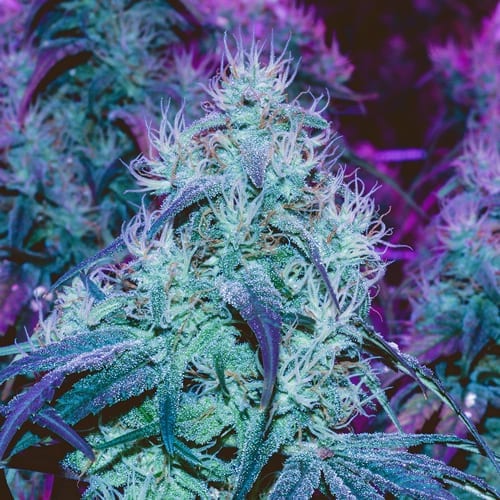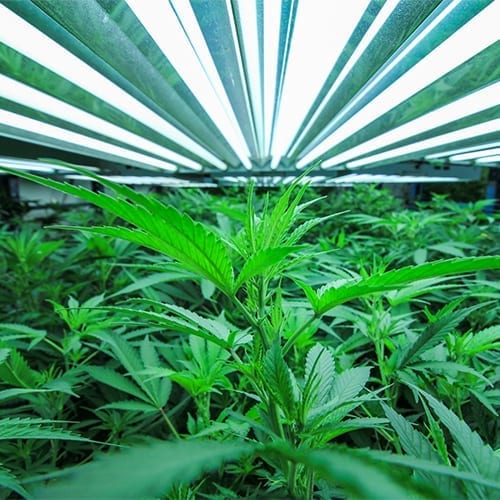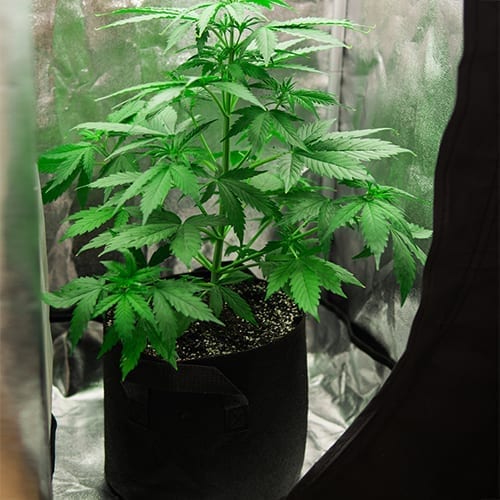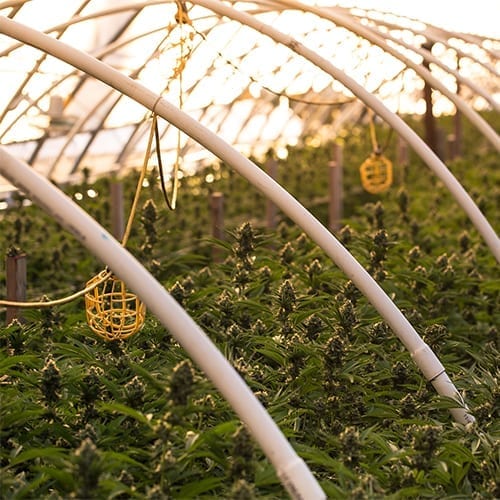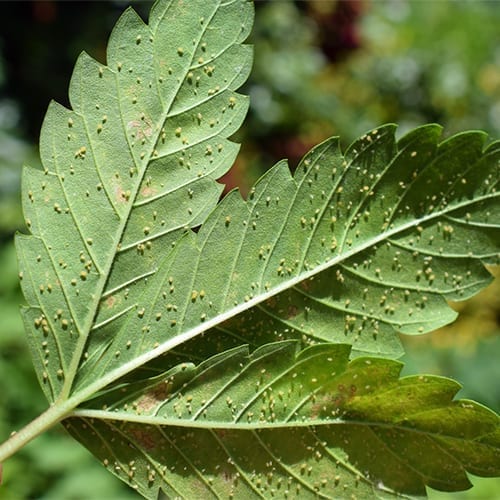
What are aphids?
Aphids are parasites that form a sub-family within the insect order Hemiptera. Like many other insects, they may represent a serious pest in many plant species, besides being an insect that can also carry several viruses and diseases. Easy to recognise as small insects of different colors (yellow, black or green) with a size of 1 to 3 mm. The body is ovoid, with 3 parts difficult to distinguish (head, thorax and abdomen). They may lack wings or have two pairs of small membranous and transparent wings. In the final part of the abdomen they have two small appendages that secrete repellents for their natural predators.
They are usually found on the underside of the leaves and stems, forming large colonies of tens (or hundreds) of individuals. They can develop symbiotic relationship with other insects like ants or bees. Aphids secrete a sugary substance from the anus – similar to molasses – that is used by ants, which in turn protect aphids from predators. Something similar happens with bees, hich incorporate this substance to their honey.
Aphid propagation
Aphids may need just one plant to complete their life cycle (monoecious cycle) or two different plants (dioecious cycle). They can also reproduce by laying eggs (sexual reproduction, involving females and males, which are smaller) or asexually (parthenogenesis). The reproduction cycle is curious; as several generations of aphids pass, and depending on environmental factors, there will be wide disparities in the offspring, with a very high degree of polymorphism. The metamorphosis suffered by the nymphs until reaching the adult stage is minimal, so larvae and adults keep a close resemblance except, of course, in regard with size.
Their breeding period is short, so they can quickly become a serious problem. Outdoors, eggs usually remain dormant during all winter and until weather conditions for hatching are optimal. However, it will continuously propagate in indoor grow rooms, which can have serious consequences if the pest is not treated on time. Aphids usually stay on the same plant that have colonised until the conditions are no longer favorable, at this time females are able to produce a winged offspring that migrate to another plant.
Symptoms and damages of an infestation of aphids
Aphids feed using a sucking mouthpart that pierces the plant tissue and sucks the sap of the plant. As we mentioned before, and besides the direct damage caused to the plant by their sucking action, we must also add the risk to get infected by a plant virus or another disease. By not tearing the plant tissue to feed, it is very difficult to see any sign of the plague, for they leave no marks as other insects do (spider mites, thrips, etc).
The first symptom that we’ll observe is the actual presence of aphids on the plants, since they are easily visible to the naked eye. We can also spot how some leaves turn yellow and dry out, also the appearance of droppings (molasses) that can bring different diseases and fungi like sooty mold (Fumaginas sp.), which we can treat with copper oxychloride. Unlike other insects, aphids feed on the tender shoots of plants, which may look sticky. The presence of ants (Asus niger) can also be a symptom of aphids on the plant, as they feed on the honeydewsecreted by aphids and take care of them, acting as a shepherd with his flock.
Thus, aphids (as other insects like whiteflies) may represent a threat that can ruin a crop for its ease of reproduction and displacement, besides their ability to carry and transmit diseases and viruses. Aphids like warm climates and environmental dryness, being spring-summer the period of natural reproduction. Using too much fertilizer is also believed to increase the risk of aphids.
Prevention and control of aphids
As always, we dwell on the importance of prevention to deal with the various pests that can affect our plants, especially if we use grow tents, which are usually ideal as a propagation habitat. Keeping the garden clean, pulling out weeds or decaying plant debris is a good way to start. We can try the beneficial association of plants, growing honeysuckle, lupine, foxglove, nettles, marigolds or wormwood – among many others – near plants which are sensitive to aphids such as roses, hydrangeas, tulips or the different marijuana varieties. Natural insecticides like potassium soap, neem oil or pyrethrins sprayed regularly on the plants always help to prevent infestations of insects, even fungi in some cases. If we choose to use natural predators, the parasite Aphidius Colemani (a small 3-4 mm wasp) feeds primarily on aphids.
If you already have a small population of aphids settled on your plants use natural and organic remedies (as we always recommend) better than chemical insecticides, which are often much more harmful to the environment. While aphids have many natural predators – like the aforementioned Aphidius Colemani, the Adalia Bipunctata or the Chrysopa Carnea), it is relatively difficult to control an infestation by simply using these predators; if they don’t work, try using other treatments such as spraying rotenone, nettle flour or garlic, or a home made tobacco-based insecticide (nicotine is a potent poison used in many insecticides). If the pest is found only in some tender shoots, we can remove the affected parts and continue with the usual prevention treatment for this pest.
In case we need to use chemicals, we must always look first for our Nature, trying to use chemicals as environmentally friendly as possible. Also, try to choose the one that is not effective against the natural predators of the pest you want to treat. In this case we will use a systemic insecticide (most systemic chemical insecticides against aphids on the market usually have Dimethoate as active ingredient), which will remain on the plant for a few weeks and poison any insect that feeds on it. From Alchimia we try to promote eco-friendly cultivation techniques, so always try to avoid using chemicals and leave them as a last, desperate measure.
As always, keep in mind that prevention is always the better option. The best way to avoid pests is following a series of simple steps that will impede their appearance, which will save you a lot of work and allow you to enjoy a healthy and natural harvest.
Source: www.alchimiaweb.com


